
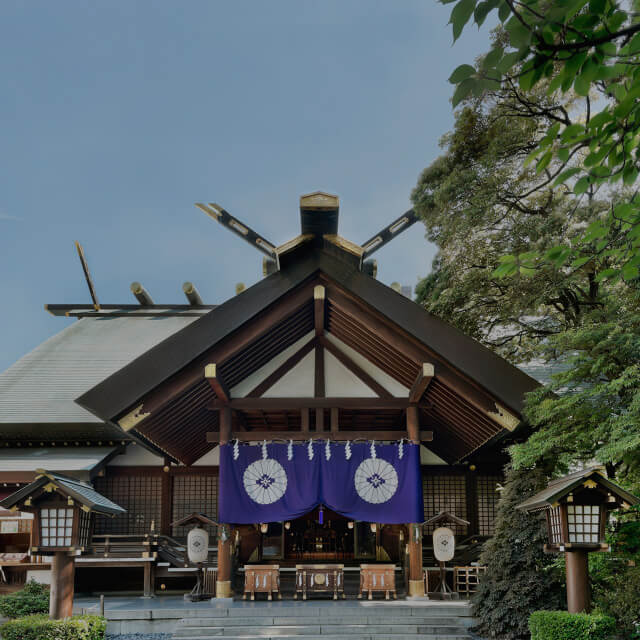
See the sights of Tokyo!
Located in the heart of Tokyo, close to some of Tokyo’s best tourist spots,
Hotel Metropolitan Edmont is an excellent hub for seeing the sights.
Here are some recommended spots to visit in the vicinity of the hotel.
- Example :
- Heritage
- Park
- Eat/Drink
- Museum
- Shopping
- Entertainment
-

Heritage
Tokyo Daijingu Shrine
Tokyo Daijingu Shrine was established in 1880 as a place where the people of Tokyo could worship the deities enshrined in the Grand Shrine of Ise from afar. Since then, it has been known affectionately as “O-Ise-sama in Tokyo.” Known as a shrine for a good marriage, long lines of worshippers coming to pray for a good match can often be seen at the shrine. It is also famous as the first shrine to conduct shinzen kekkon ceremonies, or “wedding before the gods,” a wedding style that is now very common in Japan today.
* 4 minutes walk -
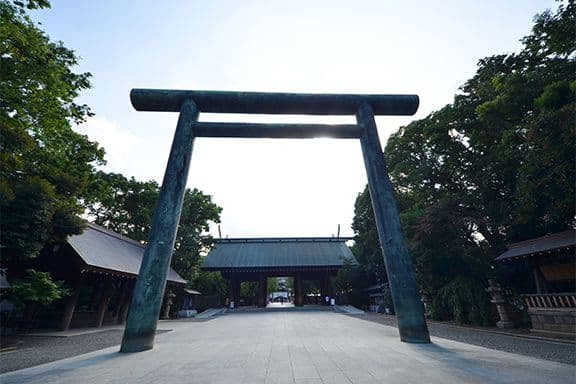
Heritage
Yasukuni Shrine
Yasukuni Shrine was built in 1869 at the wishes of Emperor Meiji. The souls of Japan’s war dead, from the imperial loyalist samurai of the Bakumatsu era to the soldiers who gave their lives in World War II, are enshrined here. Yushukan Museum in the shrine grounds exhibits valuable artefacts, including a Zero fighter plane from World War II. The shrine grounds also contain the cherry tree that is the “index” tree that Japan’s Meteorological Agency uses to forecast when Tokyo’s cherry blossoms will bloom. The shrine attracts many worshippers and visitors all year round.
* 13 minutes walk -

Park
Kitanomaru Park
Kitanomaru Park was originally the location of the northernmost section of Edo Castle. Here, you can gain a sense of history from several surviving structures of Edo Castle, such as Tayasumon and Shimizumon Gates, and recharge your energy in the rich green surroundings that seem so unlikely right in the middle of Tokyo.
A particularly recommended time to visit the park is late March to early April, when the approximately 230 cherry trees including Yaezakura and Somei-Yoshino varieties, are in bloom.
* 14 minutes walk -

Park
Chidorigafuchi
Chidorigafuchi is a moat around the northwestern section of the Imperial Palace. The Green Way path is perfect for walks and a famous spot for viewing the cherry blossoms in spring.
It is close to Kitanomaru Park, so you can take in both locations on a walk or jog.
* 18 minutes walk -
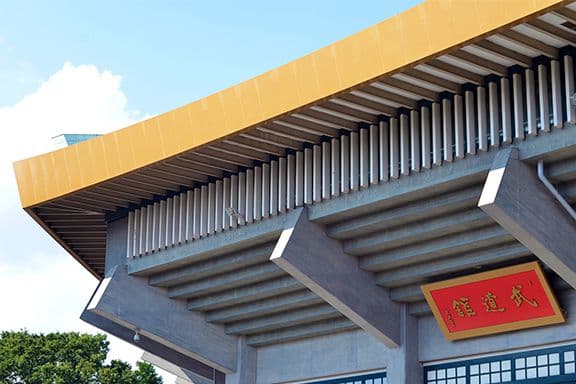
Entertainment
Nippon Budokan
One of Japan’s largest arenas, where martial arts competitions and large-scale concerts are held. The ridgeline of the massive roof is meant to resemble Mt. Fuji.
* 14 minutes walk -

Entertainment
Rakugo Cafe
This cafe’s interiors are full of exhibits related to rakugo, a traditional form of Japanese verbal entertainment. At night, you can enjoy an alcoholic beverage as you take in a rakugo performance on the koza stage.
* 13 minutes walk -

Shopping
Kanda Old Book Stores
An area with more than 100 secondhand and antiquarian bookstores. Each store has its own area of specialization, such as culture or arts, so you can find books from a variety of genres here.
* 13 minutes walk -

Entertainment
Athénée Français
Athénée Français is a cinema that shows movies and films not only from Japan, but from all over the world. It also holds lectures and workshops about film.
* 13 minutes walk -

Shopping
Meidai-Dori Street
Along the stretch of Meidai-dori Street from JR Ochanomizu Station to the Surugadai intersection, you will find many stores selling musical instruments.
* 18 minutes walk -
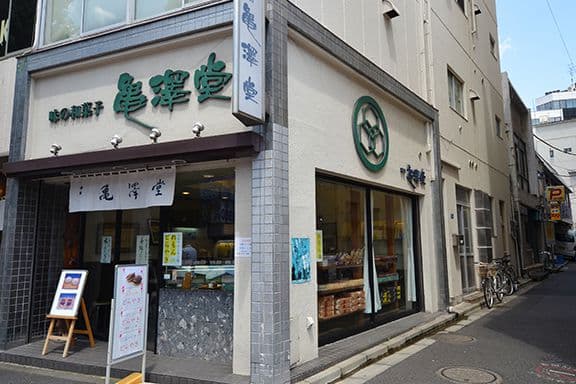
Eat/Drink
Kamezawado
A long-established Japanese sweets store, in business since 1905. Every day, it makes and sells only a limited quantity of its signature sweet, the mamedaifuku, made with soybeans from Hokkaido.
* 15 minutes walk -
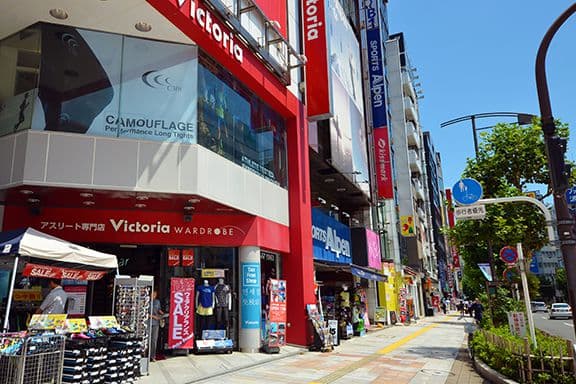
Shopping
Ogawamachi Area
An area with a high concentration of sports goods stores. Highly knowledgeable staff will give your personalized attention to help you with your purchases.
* 4 minutes walk -
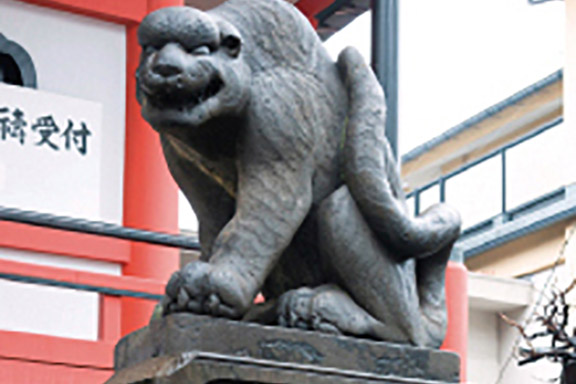
Heritage
Bishamonten Zenkoku-ji Temple
The vermilion gate along the road of Kagurazaka is the landmark. The main worship hall is the wooden Bishamonten (usually closed to the public), known affectionately as “the Bishamon of Tokyo.” It also has another name, Tamonten, and is known as a god that grants many wishes. One unique feature worth looking out for are the stone guardian tigers, which are a contrast from the usual lion-dogs of most other Shinto shrines.
* 13 minutes walk -

Heritage
AKAGI Shrine
Akagi Shrine is revered as the local Shinto deity for the Ushigome district. Protective charms with the design of GeGeGe no Kitaro, a popular Japanese manga series about Japan’s traditional ghosts and ghouls, are popular with shrine visitors. Take a break in the Akagi Café in the shrine grounds.
* 18 minutes walk -
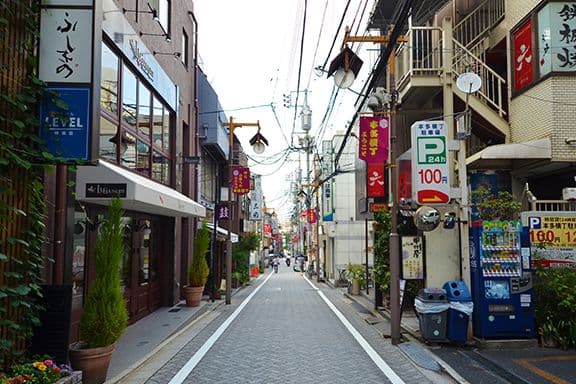
Heritage
Honda Yokocho
The name of this alley comes from the fact that the Tokyo residence of the Honda family, feudal lords of Edo Period, once stood here. It is the largest yokocho, or alley, in Kagurazaka.
* 12 minutes walk -
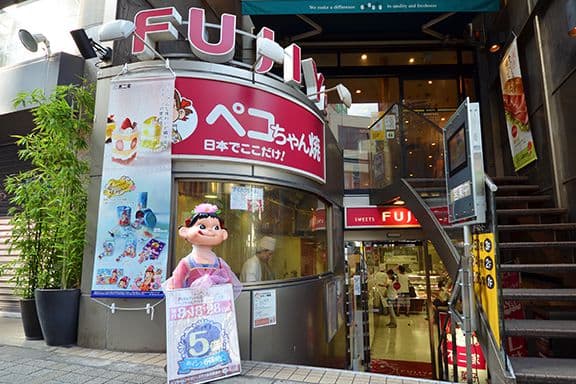
Shopping
Fujiya Iidabashi Kagurazaka Store
The Pekochan-yaki, a red bean jam-filled cake in the shape of Pekochan, the Fujiya chain’s mascot character, can only be found at this branch.
* 9 minutes walk -
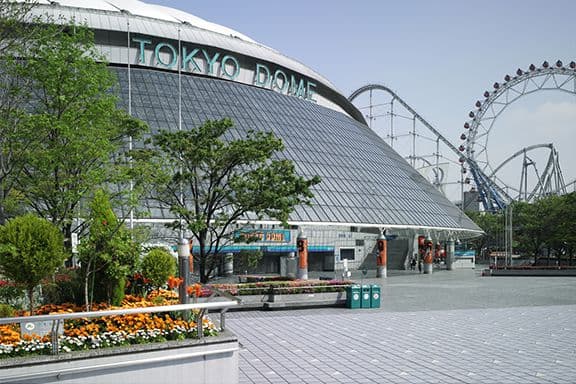
Entertainment
Tokyo Dome
Baseball games, various other sports, concerts and other large events are held here. As well as Tokyo Dome itself, Tokyo Dome City contains the hot spring facility, Spa LaQua, and the indoor children’s play facility, ASOBono!.
* 11 minutes walk -
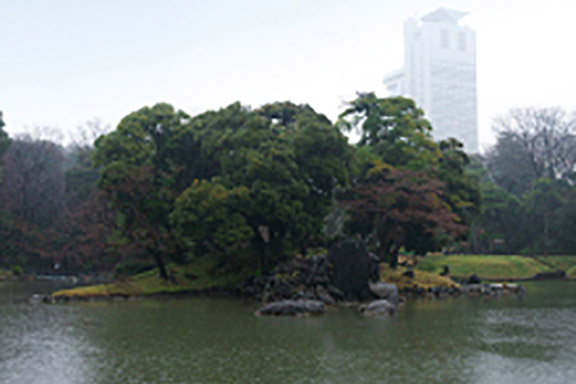
Park
Koishikawa Korakuen
Koishikawa Korakuen, a Japanese garden that is a designated historical site and place of special scenic beauty, is particularly beautiful in the cherry blossom and fall foliage seasons, but with its many flowers and plants for all seasons, it is a spot that can be enjoyed all year round.
* 10 minutes walk -

Entertainment
Bunkyo Civic Center
The 25th floor of this building is open to the public as an observatory lounge. From here, you can see Tokyo Skytree and, way off in the distance, Mt. Fuji.
* 16 minutes walk -
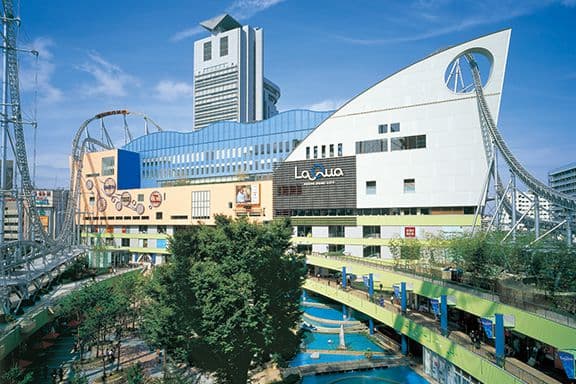
Entertainment
LaQua
An entertainment complex in Tokyo Dome City that includes a spa with the theme of “water,” shops, restaurants, and other attractions. Spa LaQua is a day-trip hot spring bath that draws its hot spring waters from Koishikawa Onsen. The 80m-high Ferris wheel and other attractions are also popular.
* 14 minutes walk -
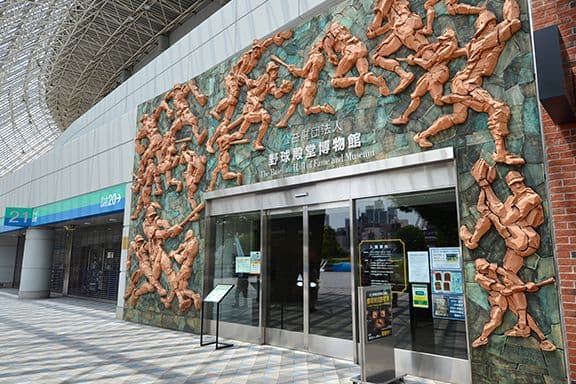
Entertainment
The Baseball Hall of Fame and Museum
Bats and uniforms actually used by the stars of Japanese baseball are on display. There are also reliefs of the faces of the game’s hall-of-famers.
* 10 minutes walk -
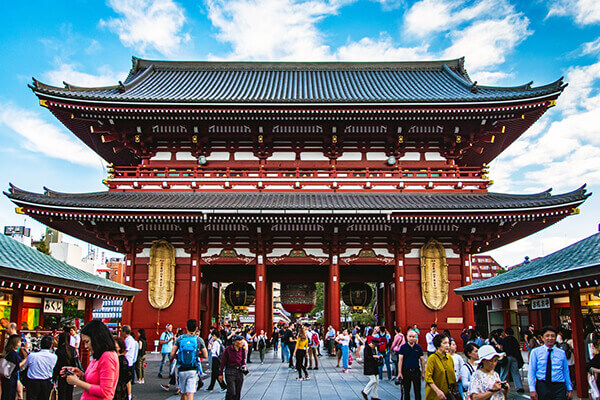
Heritage
ASAKUSA
Asakusa is a famous sightseeing spot in Tokyo,which is reminiscent of the Edo period.This district has been flourishing as a temple town of Senso-ji, the oldest and the largest temple in Tokyo. Kaminarimon, or “Thunder Gate,” the outer gate of the temple is very famous as a landmark of Asakusa for its huge red lantern.
-
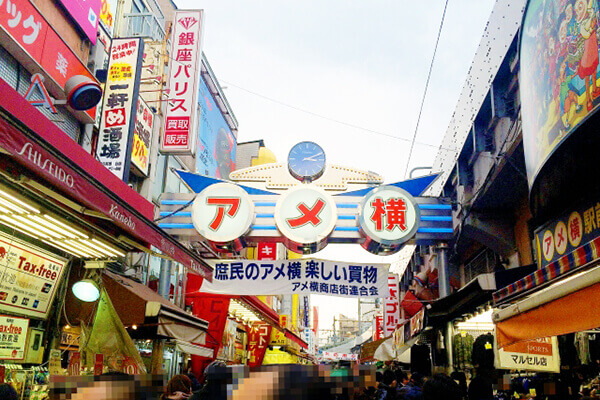
Eat/Drink
UENO・AMEYOKO
Ueno is unusual; on the one hand, there's the spacious, historic park, boasting world-class museums, a zoo, a tree-lined pond and some major shrines. Then there's the narrow maze of cheap eats and stalls selling everything from fresh fish to vintage watches, and a booming mini-Koreatown. Every turn promises a new adventure.
-
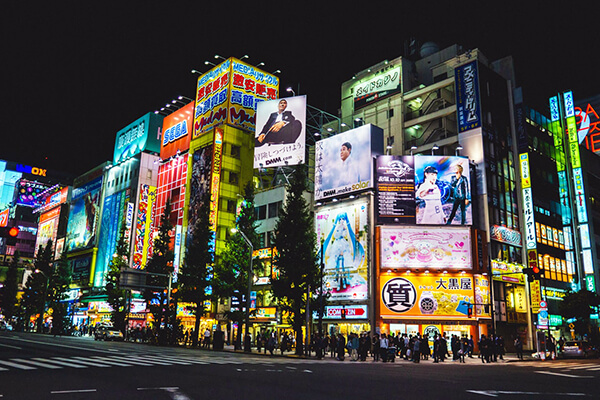
Shopping
AKIHABARA
Beginning its existence as a center of postwar black-market activity, Akihabara later became the showcase of Japanese tech, jam-packed with shops selling all kinds of electronics and IT to the world. More recently, it has also become the cultural home to the diehard fans of gaming, manga and anime—the otaku. The area is an urban temple for worshippers of Japanese subcultures with pop idols, and cosplayers. Stroll Akihabara's avenues for a one-of-a-kind cultural experience.
-
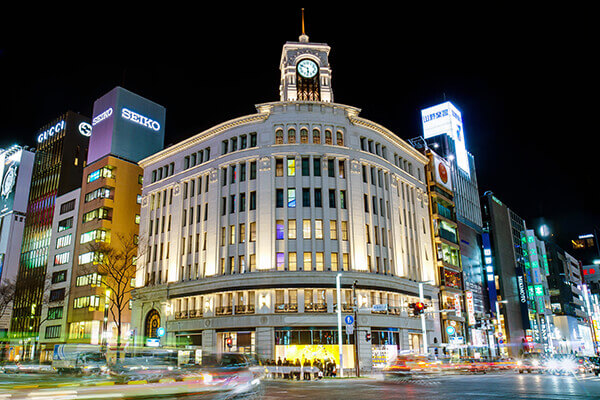
Shopping
GINZA
Built on the site of a mint dating back to the Edo era (1603-1867), Ginza is an area steeped in history with an air of self-assured elegance. Its main street houses some of Tokyo's original department stores, and many still flock here for peerless service that matches the high-class products on offer. Ginza's backstreets are adventures in boutique shopping and tiny yet exquisite bistros.
-

Eat/Drink
KAGURAZAKA
Kagurazaka, an area that flourished as a pleasure quarter, where geisha performed, still retains vestiges of the Edo Period.
Its cobblestones, staircases, hills, many French restaurants, and even French language schools, have even earned it the nickname “Little Paris.”
Many high-class ryotei, or traditional Japanese restaurants, and Michelin-starred restaurants can be found in this area.
Kagurazaka is a recommended destination for anyone who wants to find great food or even just take a stroll to see the authentic face of Tokyo, just a short walk from the hotel. -
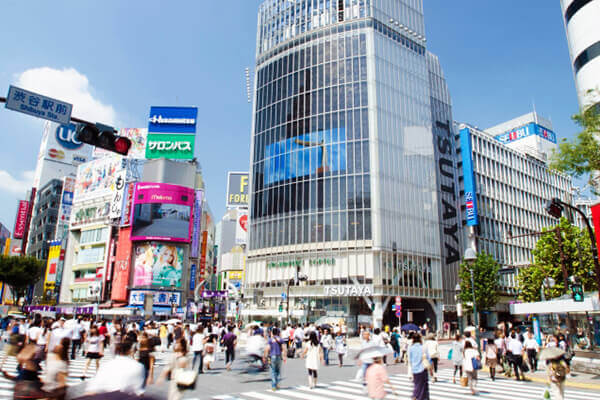
Entertainment
SHIBUYA
This area is always at the cutting edge of fashion and culture. Enjoy the shopping, the food, and the art scene. The famous scramble crossing is waiting for you to join the crowds of people who cross it every day.
-
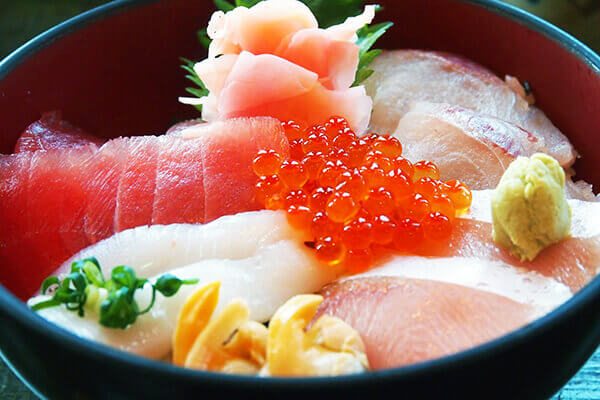
Eat/Drink
TSUKIJI
The wholesale markets have moved to Toyosu, but the Tsukiji outer market, one of Tokyo’s most famous foodie spots, is still full of vitality and energy. Be sure to enjoy some sushi in its natural home.
The nearby Tsukiji Honganji Temple is also definitely worth a visit.
Its distinctive external appearance, which resembles an ancient Indian Buddhist style, the stained glass at the entrance of the main hall, and the many sculptures of animals, combine to create a very oriental atmosphere, telling the story of the roots of Buddhism’s arrival in Japan along the Silk Road. -
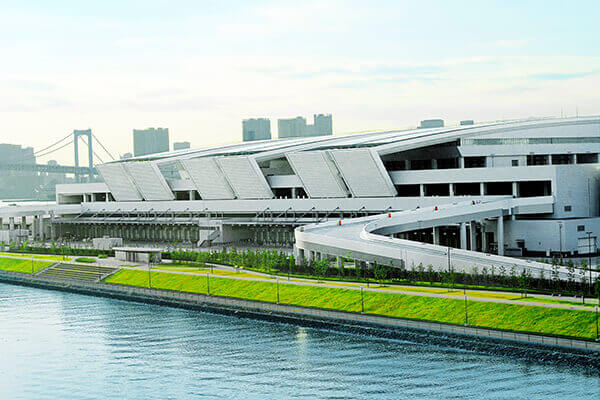
Eat/Drink
TOYOSU FISH MARKET
Tokyo’s new wholesale market that opened in 2018.
There is plenty here for the general public to enjoy, including eating seafood and vegetables fresh from the market at the food establishments, and observing the powerful tuna auctions at the market. -
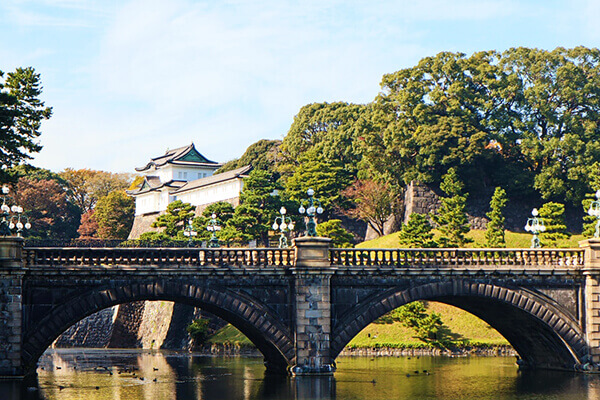
Heritage
IMPERIAL PALACE EAST GARDEN
Open to the general public, this park, which is a designated historical park of Japan, preserves remnants of Edo Castle.
Here, you can gain a feel for the history of Edo from sights like the stone walls that are all that remain of the castle’s main keep, as well as the remaining watchtowers.
It is also a great place to enjoy the flowers of the seasons, including the cherry blossoms in spring. -
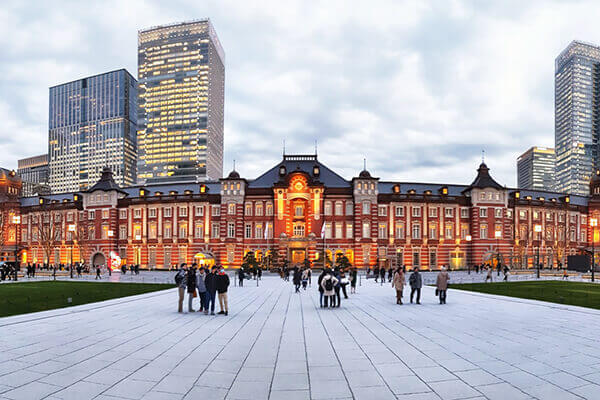
Heritage
TOKYO STATION
The center of Tokyo, where the red-bricked station building and skyscrapers stand side-by-side in harmony. Numerous companies and financial institutions are located in the vicinity, which has become Japan’s economic hub. With hotels and commercial facilities also being built, it continues to develop as a shopping district as well.
-
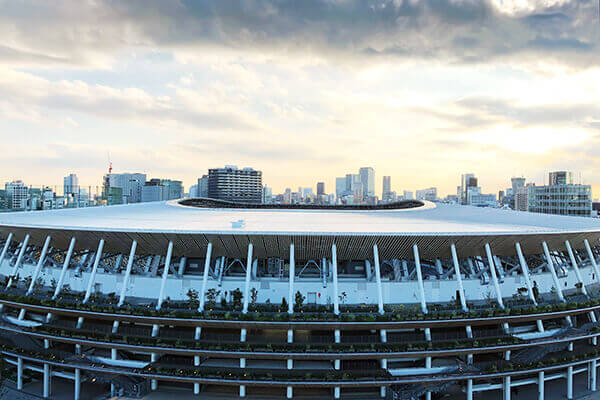
Entertainment
Olympic Stadium
The Japan National Stadium, which was the Olympic Stadium for the 1964 Tokyo Games, will be reborn as the new National Stadium in 2020. At the Tokyo 2020 Games, it will be scene of the opening and closing ceremonies and will also hold the track and field and soccer events.
-

Entertainment
TOKYO SKYTREE
The great Tokyo landmark, Tokyo Skytree.
From the observatory, you can look out at the sight of Tokyo, Japan’s capital city, and enjoy shopping and food at the Soramachi shopping town at the foot of the tower. -
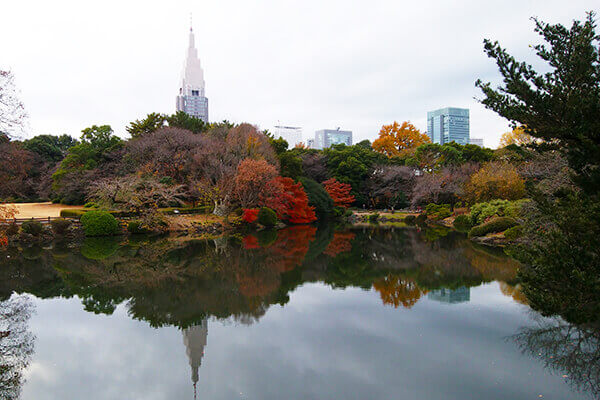
Park
SHINJUKU GYOEN
This approximately 58-hectare site is a combination of a Japanese garden, English garden, and French garden.
The number of trees planted here exceed 10,000.
It has been selected as one of Japan’s top 100 sites for viewing the cherry blossoms. The approximately 1,300 cherry trees, of 65 different varieties, attract huge crowds in spring.
